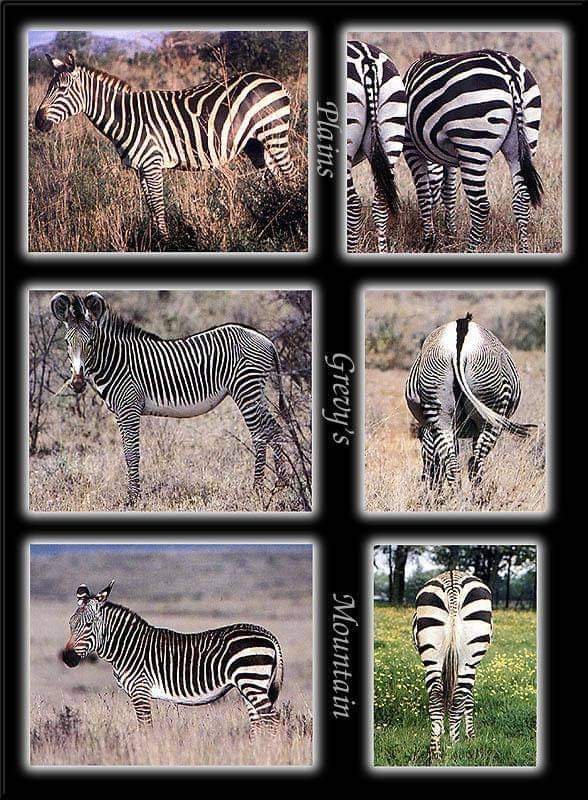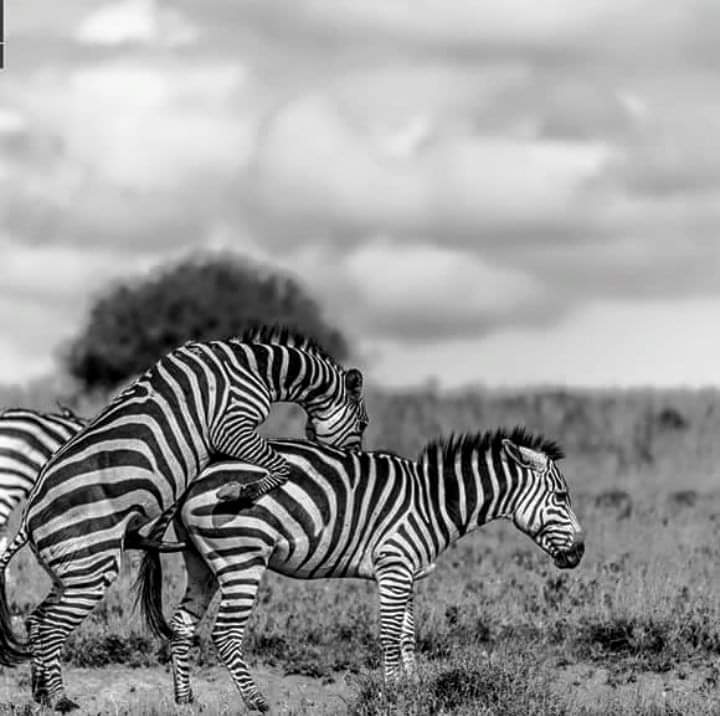
There are three species of African zebra, and each one has its own distinctive difference in markings/stripes.
- From top to bottom:
- Top- Plains zebra.
- Middle — Grevy’s zebra.
- Third and bottom — the mountain zebra.
A zebra will snort when it is unsure about something, or scared.
Although the zebra is a tough animal and can survive in many habitats, they are mostly seen on the savannas.
African Zebra Behaves like horses
If you are used to horses, the zebra’s behaviour is very similar. The zebra is a true wild horse. Four basic zebra ‘language’ we often see:
- Ears up — the zebra is alert and listening.
- Snorting — The zebra is unsure, scared .
- A kicking back leg (one leg) — aggression.
- Stamping front hoof — usually means impatience.
A zebra mare is only fertile for a short period once a year, so the stallion has to keep an eye on them, because there are other stallions around and a mare can go to a different stallion and not the dominant one. So, the dominant stallion will often smell his mare’s urine, as that will tell him when the time has arrived!
A dominant African zebra stallion has to keep a good eye on his herd/ harem of mares as other stallions will try to entice them away to mate with them. When the dominant stallion sees them approaching, he wrinkles his top lip to expose his teeth. This is sometimes enough to chase away the younger stallions. If the intruder keeps coming, there will be a fight.
Interesting Notes About African Zebra
Zebra is an ancestor of a species of wild horse and belongs to the family Equidae. It is closely related to a horse, but much smaller in size. Researches have led to the production of hybrid species between a zebra stallion (male) and a horse mane (female) giving birth to an offspring called “Zorse” or “Hebra”, collectively known as “Zebroids”. “Zorse” is sterile, like most hybrids.
There are three main species of zebra and all are native to Africa — plains zebra, grevy’s zebra and mountain zebra. Each of these three has a different pattern of stripes like our fingerprints. The most common type is the Plains zebra which is found in the grassland and woodland of Eastern and Southern Africa.
Zebras are highly and easily recognisable because of their unique pattern of stripes. Several evidences revealed that those patterns prevent them from insect bites–that is the most recognisable reason, but the truth is that there is still no definite reason for them. The African zebra has never been fully domesticated — they will always be wild, so might seem tame in a few settings, but this herbivore has never been domesticated. The plains zebra forms a social structure known as “harem” which comprise of one male to six females and their offsprings.
The main predators are lion, leopard and cheetahs. When a predator invades them, they form a semicircle to collectively defend themselves. The mountain species are especially good climbers — have a hard pointed hooves.
- A group of zebra is called a “dazzle”.
- According to the IUCN, the plains zebra is not endangered, while the mountain zebra is considered vulnerable and the Grevy’s zebra is endangered

When African Zebra Stalliones takes over harems after ousting older Stalliones (Usually after very nasty fights) They ensure they end the bloodlines of the former masters by killing all foals of the ousted stalliones (Infanticide)
If the Harems are pregnant They use their rather longer penises to cause abortions by destroying the growing foetus

